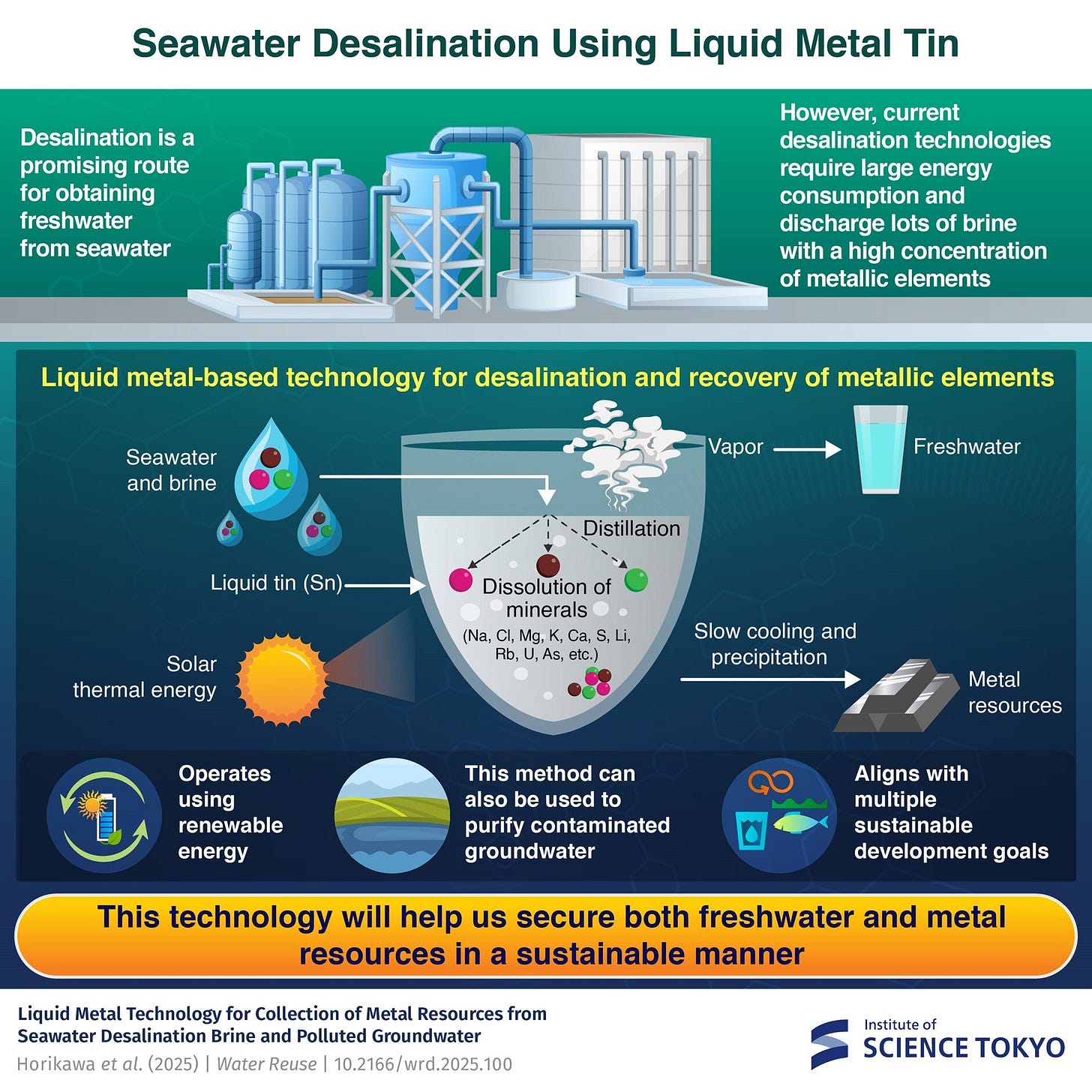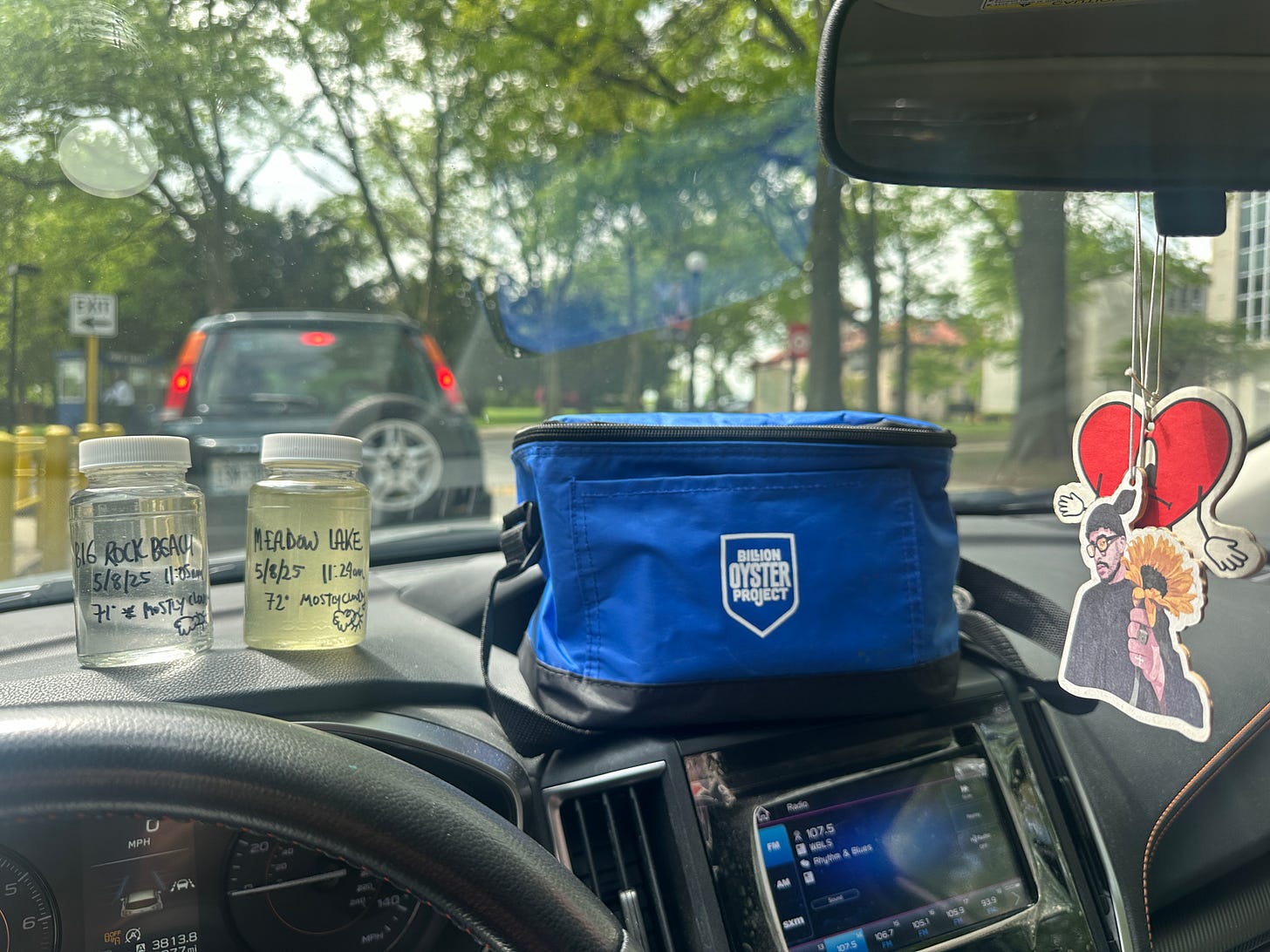#262 - CWQTP, 3M, EPA, Liquid Tin & Solar Desalination without sunlight
Water Water Everywhere...
Hey Readers,
This week we return to regularly scheduled programming with a mix-bag of innovations and news. Let’s get into it!
Innovations Roundup
Liquid metal tin to clean water
Regular readers will know that this publishing team is big on desalination, but are also the first to acknowledge the tremendous power needs and inherent inefficiencies in the current mass-scale desalination processes like brine discharge etc. Which is why we keep a close eye on smart people solving for those problems. Enter a research team from the Institute of Science Tokyo, Japan. They looked at the fact that current desalination plants discharge massive amounts of brine as waste—approximately 141.5 million cubic meters daily. They then asked the question - How can we transform desalination brine from an environmental liability into a valuable resource?
Their solution? - Extracting the remaining water from the brine and extracting the concentrated metallic elements. This effort by existing methods for recovering metals from brine are quite energy-intensive and generate other types of hazardous waste. This team, however, has developed an innovative approach using liquid metal tin to simultaneously purify water and recover valuable metals.
How does it work? - They spray brine onto the surface of liquid tin heated to 300° C. Upon contact, freshwater is instantly evaporated and thus distilled from the brine, while valuable elements such as sodium, magnesium, calcium, and potassium remain in the tin. After minerals are dissolved into the liquid tin, a slow cooling process allows different metal elements to precipitate at specific temperatures, enabling their separate recovery. Through laboratory experiments, the researchers found that potassium begins to precipitate first, followed by sodium, calcium, and finally magnesium, enabling targeted recovery of each resource.
Solar water production (with or without sunlight!?)
Staying with desalination - a team of Rice University engineers has developed a solar powered desalination system that uses a creative approach to heat recovery for extended water production—with and without sunshine. First the science lesson - As water evaporates, solids such as salts and other impurities are left behind; meanwhile, water vapor cools and condenses into fresh water. Evaporation uses up energy to overcome the intermolecular forces that characterize water in the liquid phase, and condensation releases the energy as vapor turns back into liquid. For thermal desalination systems to be efficient, the energy generated in the transition between liquid and vapor must be recovered and reused.
The new technology, called Solar Thermal Resonant Energy Exchange Desalination or STREED, leverages water flow and airflow using insights from the physics of resonant systems such as pendulums and electrical circuits. In resonant systems, energy naturally oscillates between different forms in a repeating cycle, doing so most efficiently at specific "resonant" frequencies.
Instead of energy alternating between potential and kinetic (as in a pendulum) or bouncing back and forth between a magnetic and an electric field (as in a tuned electrical circuit), STREED is all about conserving the energy exchanged between two counter-flowing fluids: a stream of heated saline water and a flow of air. When tuned correctly, heat oscillates between these two streams in a resonant pattern, efficiently storing and transferring thermal energy even as the sun retreats behind clouds or the horizon. In contrast to conventional systems, the setup is made from non-degradable materials and can handle high-salinity brines.
News Roundup
Trump's administration on Wednesday moved to scrap limits on several toxic "forever chemicals" in drinking water, reversing what had been hailed as a landmark public health victory. They say they aren’t doing anything different but IYKYK.
It’s not all bad news as per the folks in the NY Times - 3M to Pay New Jersey Up to $450 Million for Drinking-Water Contamination. Maybe PFAS polluters will still pay for their mistakes.
And lastly for this week we have the results from the Community Water Quality Testing effort here in NYC - Give the CWQTP newsletter a read!
That is it for this Friday, until next week,
Peace!






